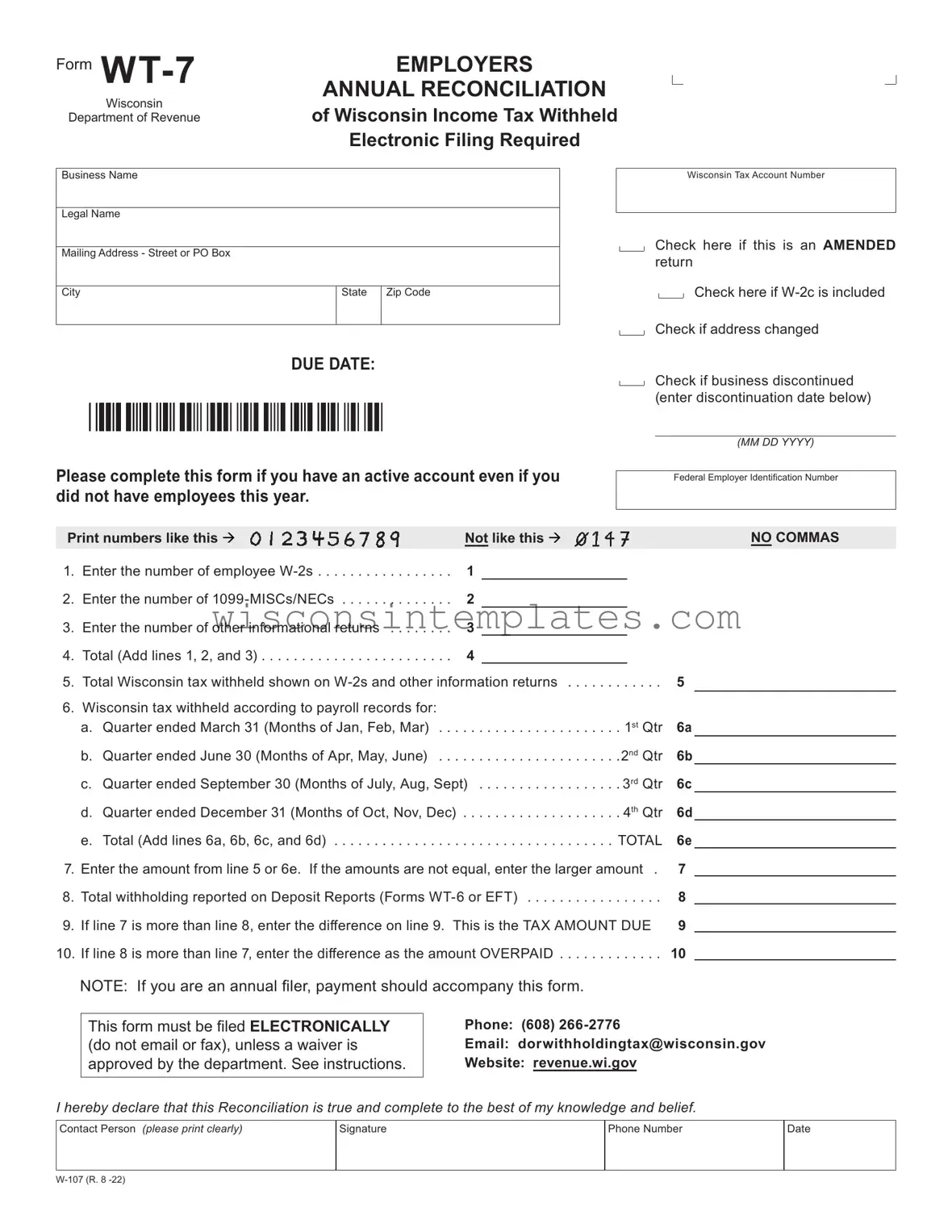The Wisconsin WT-7 Tax form serves as a crucial tool for employers in the state, facilitating the annual reconciliation of income tax withheld from employee wages. This form is not just a routine requirement; it ensures that businesses accurately report their withholding activities for the year. Employers must provide essential information, including their business name, mailing address, and Wisconsin Tax Account Number, alongside their Federal Employer Identification Number. The WT-7 requires employers to detail the number of employee W-2s issued, along with any 1099-MISCs or other informational returns, giving a comprehensive overview of their payroll activities. The form also necessitates a breakdown of the total Wisconsin tax withheld, which must align with both W-2s and payroll records across four quarters. If discrepancies arise between reported amounts, employers need to indicate whether they owe additional tax or have overpaid. Notably, electronic filing is mandatory unless a waiver is obtained, reinforcing the importance of compliance in the filing process. The WT-7 not only aids in maintaining accurate tax records but also supports the state's revenue collection efforts, making it an essential document for all active employers in Wisconsin.
